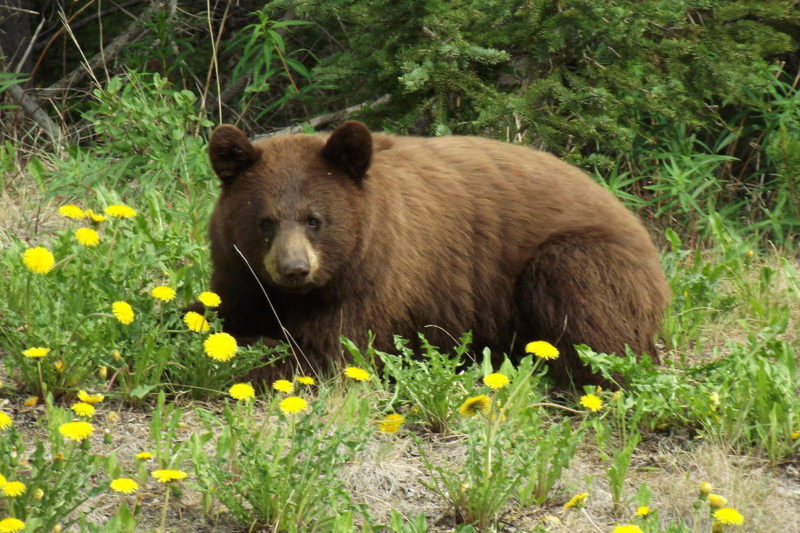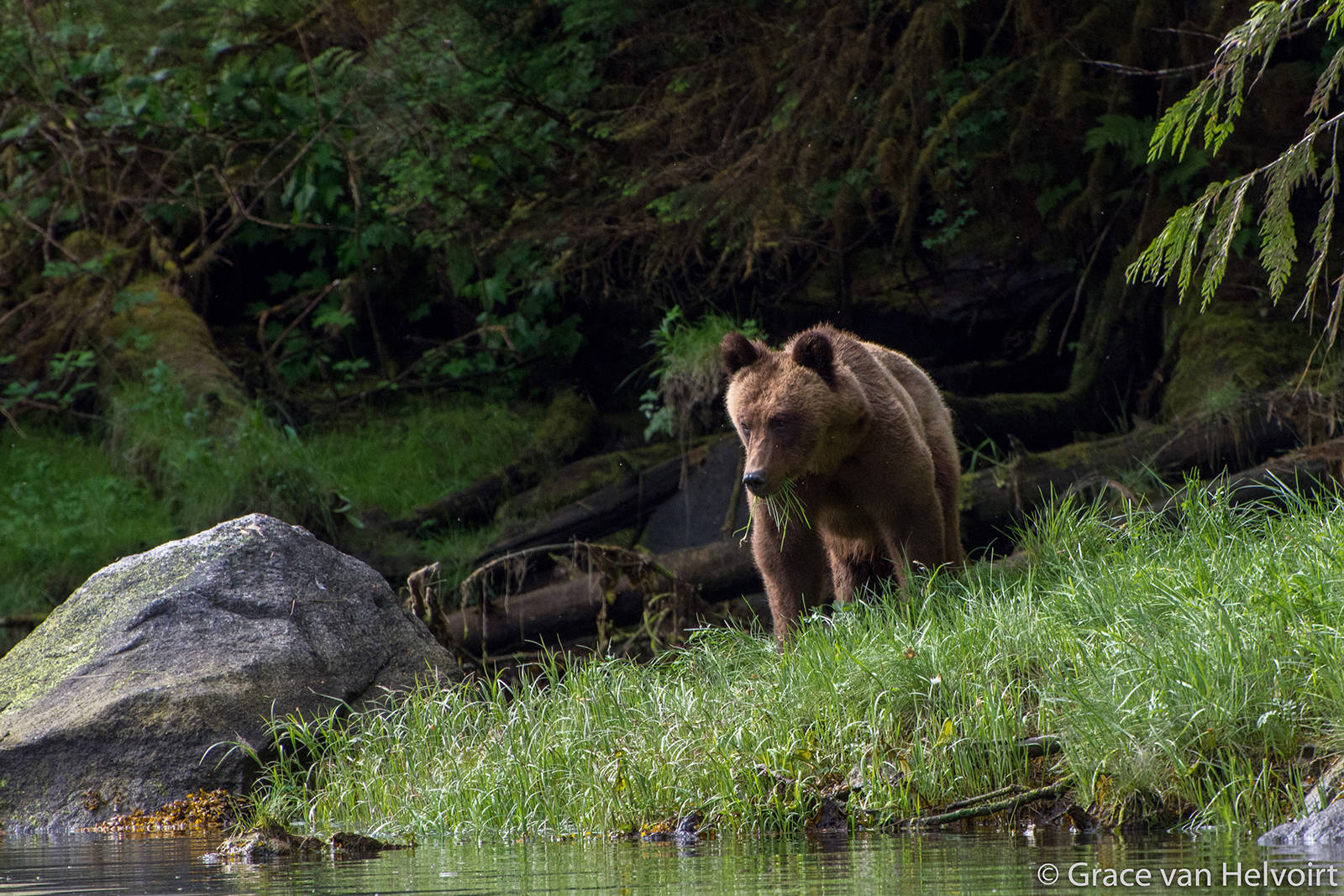As bears emerge from hibernation with big appetites, it’s important for hikers and others to be alert.
“If you’re out hiking in the forest, just expect that there could be bears in the area,” says Rosie Wijenberg, WildSafeBC community coordinator.
“When they wake up, it’s a matter of life and death for mothers to feed their cubs. They will be very hungry until the berries ripen and come in season.”
Throughout the winter, bears rely on nothing but fat reserves built up by feasting during the fall.
Black bears and grizzlies are omnivores, with a varied diet consisting of grasses, flowering plants, roots, berries, insects, small rodents, fish (especially salmon), and carrion. Bears also hunt and kill deer, elk, moose and caribou, usually when the prey are young and defenseless.
As opportunistic feeders, bears can also develop a taste for human food and garbage.
Wijenberg said it’s important to manage attractants and make sure garbage is securely stored to keep bears away. Bird feeders and fruit trees can also encourage bears to come into backyards and get too close to people’s homes.
Bears that are habituated to humans can become aggressive. Sadly, this might lead to them being put down by conservation officers.
How to avoid bear encounters
Wijenberg says bears are typically wary of people and will avoid confrontation.
On trails, hikers should travel in groups and make lots of noise to ensure their presence is known. Dogs should also be kept on a leash at all times. Off-leash dogs might bark and take chase, which could provoke defensive bear behaviour.
Bears are most active at dawn and dusk, which is why those 5 a.m. solo jogs at the park are not recommended. Coming around a corner quick and silent could surprise an unaware bear. As a precaution, always carry bear spray.
“Make sure it isn’t expired and you know how to use it,” Wijenberg says.
“It should be easily accessible so you can remove the safety clip and deploy the spray in less than two seconds. That’s a skill everyone should practice.”
A video demonstration and more tips can be found online at wildsafebc.com/learn/bear-spray.
If a bear attacks
If a bear has cubs or food nearby, it might feel threatened and charge.
“For defensive behaviour, they will try to appear big and scary to make you go away,” Wijenberg says.
“In that instance, you’re going to back up slowly to remove yourself from the situation. Stay facing the bear and talk in a low, calm voice. Have your bear spray ready. Never run or scream, as that can trigger an attack.”
If a bear persists and approaches you, use your bear spray.
If the bear makes contact with you, roll on your stomach, cover the back of your neck, remain still and play dead. They will lose interest and leave.
In rare cases, a bear may see a human as prey and stalk you along a trail. In these cases, make yourself appear big and yell aggressively. Try to escape by getting to a building or car, or by climbing up a tree. If you can’t get away, use your bear spray. If that doesn’t work, use a weapon (rocks, sticks, hiking poles) to fight off the bear.
This same advice also applies to cougar encounters. Hikers can check wildlife sightings at warp.wildsafebc.com. The website shows reports to conservation officers of dangerous encounters.
Plan your adventures throughout the West Coast at westcoasttraveller.com and follow us on Facebook and Instagram @thewestcoasttraveller. And for the top West Coast Travel stories of the week delivered right to your inbox, sign up for our weekly Armchair Traveller newsletter!












 Ahousaht First Nation launches new search and rescue vessel
Ahousaht First Nation launches new search and rescue vessel